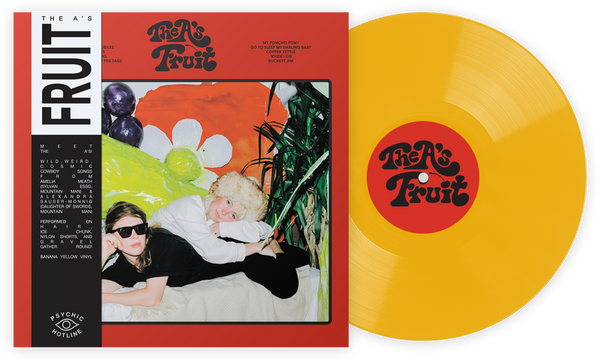Beberapa aspek kehidupan modern adalah suatu hal yang konstan. Ungkapan “untuk kenyamanan Anda” umumnya tidak berkaitan dengan sesuatu yang nyaman, dua barang yang dimasak dari beku dan umumnya dimakan bersama tidak akan memiliki suhu yang sama yang dibutuhkan untuk dimasak dalam oven dan Korn akan membuat “kemajuan baik” pada materi baru. Lebih spesifik untuk sudut kecil dunia kami adalah fenomena yang dapat diamati ketika seseorang meminta rekomendasi peralatan untuk harga tertentu. Seperti pasti malam mengikuti siang, dalam lima posting pertama akan ada dukungan untuk membeli sesuatu yang bekas dibandingkan baru.
Memang, ada beberapa argumen yang segera dapat diidentifikasi mengapa ini masuk akal. Hampir semua peralatan yang dibeli baru akan segera mengalami beberapa tingkat depresiasi karena tidak lagi baru—kotak telah dibuka, kemasan digerakkan dan barang tersebut digunakan. Dalam beberapa kasus, ini dapat mengakibatkan pengurangan biaya yang substansial, bahkan jika peralatan yang bersangkutan hampir tidak digunakan. Semakin tua barang tersebut (hingga titik tertentu, seperti yang akan kami bahas), harganya akan terus turun. Jika Anda bisa membeli sesuatu yang dulunya seharga $1.000 seharga $300, mengapa Anda melakukan hal lain?
Sebelum Anda terburu-buru ke eBay, ada beberapa hal yang perlu diperhatikan. Membeli peralatan audio bekas menghadirkan serangkaian penilaian nilai yang sama seperti yang lainnya dan Anda perlu mempertimbangkan ini sebelum memutuskan apakah produk bekas itu tepat untuk Anda. Seperti halnya segala sesuatu, penilaian ini bukanlah hal yang absolut dan akan bervariasi tergantung pada kebutuhan dan anggaran Anda serta sedikit keberuntungan dan keadaan.
Kita bisa mulai dengan sesuatu yang hampir absolut. Jika Anda ingin membeli cartridge, membeli yang bekas adalah ide yang buruk. Seberapa buruk itu bervariasi, tetapi jarang sekali baik. Seperti yang telah kita bahas, cartridge aus karena digunakan. Tak peduli seberapa hati-hati Anda, proses ini adalah efek samping dari memutar rekaman. Menentukan seberapa ausnya cartridge membutuhkan mikroskop dan pemahaman yang baik tentang apa yang Anda cari. Cartridge itu sendiri tidak dilengkapi dengan cara untuk mencatat penggunaan, jadi setiap pernyataan tentang keausan harus dianggap sebagai artikel keyakinan. Sesuatu yang tampak baru bisa jadi sebenarnya sudah tidak layak pakai. Dalam kasus desain magnet bergerak, ini mungkin berarti stylus baru (yang dapat memakan biaya tiga perempat dari harga cartridge) tetapi dengan desain kumparan bergerak, Anda harus melakukan perbaikan total atau pertukaran.
Namun, untuk komponen lain yang menyusun turntable, ada beberapa argumen menarik untuk peralatan bekas. Turntable adalah teknologi yang "matang" (cara sopan untuk mengatakan tua), jadi sebagian besar model yang dibuat dalam 40 tahun terakhir akan berfungsi dalam sistem modern. Hanya karena Anda dapat membeli sesuatu yang tahu apa yang dilakukannya ketika Dark Side of the Moon dirilis tidak berarti Anda harus melakukannya. Setelah peralatan mencapai lebih dari satu dekade, mungkin lebih baik untuk mulai memikirkannya sebagai "vintage" daripada bekas—dan seperti mobil vintage, furnitur, pada dasarnya apa saja vintage, mungkin membutuhkan lebih banyak perhatian dan pemeliharaan daripada sesuatu yang lebih modern.
Apakah ini masalah? Ini tergantung pada turntable yang Anda cari. Beberapa perusahaan berusaha untuk dapat memperbaiki dan merawat produk puluhan tahun setelah dibuat, tetapi ini bukan hal yang pasti untuk semua merek dan model. Jika Anda melihat banyak desain lama dari tahun '70 dan '80, Anda harus mempertimbangkan bahwa jika itu mengalami kegagalan besar—motor menjadi penyebab utamanya—kecuali Anda membeli yang lain untuk dijadikan suku cadang, Anda mungkin harus membuangnya. Tidak perlu dikatakan bahwa turntable baru jauh lebih kecil kemungkinannya mengalami ini dan memiliki garansi jika terjadi. Bagi Anda yang memiliki keterampilan, ini tidak akan menjadi masalah, tetapi jika Anda tidak percaya diri bekerja sendiri, peralatan yang lebih tua mungkin bukan tempat yang ingin Anda mulai mencarinya.
Untuk peralatan bekas yang lebih baru, jika Anda ingin membeli turntable X dan seseorang menjual contoh bekas dari turntable itu, adalah bodoh untuk tidak setidaknya mempertimbangkannya. Seperti halnya yang lain, cara penjualannya harus diperhitungkan. Apakah iklan itu hanya entri Craigslist satu kalimat atau daftar terperinci dengan banyak foto berkualitas baik di situs seperti Audiogon? Ada pepatah bahwa jenis perhatian yang diberikan kepada penjualan barang memberikan petunjuk tentang tingkat penghargaan yang dimilikinya, jadi carilah seseorang yang jelas telah membaca [panduan kami tentang menjual peralatan]http://www.vinylmeplease.com/magazine/a-guide-to-selling-your-turntable/) karena ini menunjukkan bahwa mereka merawat turntable itu di tempat pertama.
Tempat yang ideal untuk peralatan bekas yang membuat banyak sense adalah ketika anggaran Anda mencapai $500 dan lebih. Pertama, pilihan material untuk dijual umumnya mencakup model-model yang beberapa tahun lebih tua dengan penghematan antara 25 hingga 50 persen dari harga daftar, dan contoh yang sedikit lebih tua dari model-model yang lebih mahal di mana suku cadang tersedia dengan mudah (dan yang umumnya telah dirawat oleh pemilik sebelumnya). Ini berarti Anda mendapatkan penghematan yang layak tetapi juga mendapat sesuatu yang tidak mungkin sudah aus. Seperti banyak hal dalam hidup, semakin banyak orang di sekitar Anda, semakin besar kemungkinan ada sesuatu yang menarik dijual di dekatnya, tetapi saya curiga bahwa Anda yang tinggal di tengah hutan sudah mengetahuinya.
Apakah turntable ini secara konsisten lebih baik daripada model baru yang tersedia dengan harga yang sama? Sekali lagi, ini tidak selalu jelas. Jika turntable bekas dalam kondisi baik dan telah disetel dengan baik serta digunakan dengan peralatan pendukung yang sesuai, Anda bisa menjadi pemilik kesepakatan yang sangat bagus. Namun, semakin tua perangkat, semakin sulit mencapai ideal ini. Saya rasa adil untuk menunjukkan bahwa kita sekarang sudah hampir satu dekade dalam kebangkitan minat pada vinyl sebagai format. Ini berarti bahwa sebagian besar, peralatan bekas dihargai dengan wajar sesuai dengan nilai sebenarnya. Sesekali, sesuatu akan lolos dari pengamatan (dan begitu juga barang-barang yang sedang tren bisa sangat mahal) tetapi ini adalah pengecualian dan bukan norma.
Jika saya belum terdengar sangat positif tentang membeli yang bekas sejauh ini, ada beberapa bidang dalam rantai vinyl di mana beberapa keuntungan yang berharga dapat diperoleh dengan melihat barang bekas. Yang benar-benar menarik perhatian pada saat penulisan ini (September 2017) adalah phono preamps. Sebagai kategori, preamp tidak memiliki beberapa kekhawatiran yang dapat terjadi pada turntable. Mereka tidak memiliki bagian yang bergerak dan jika Anda tidak melihat model dengan katup, mereka bisa menjadi perangkat yang cukup tahan lama. Jika Anda baru mulai dan anggaran ketat, Anda sering kali dapat menemukan salah satu model terjangkau favorit kami (atau pendahulunya) dengan penghematan yang berguna. Jika Anda memiliki sedikit lebih banyak anggaran, beberapa bagian peralatan high-end yang asli dapat muncul dengan harga yang masuk akal jika Anda tahu ke mana mencarinya dan bertindak cepat.
Akhirnya, peralatan bekas sering kali merupakan pilihan yang baik tetapi—terlepas dari seberapa tegas orang-orang yang memberi Anda rekomendasi—ini bukanlah keputusan yang tanpa pertimbangan. Jika pilihan Anda antara sebuah perangkat baru yang terpercaya atau risiko dengan iklan online yang tidak jelas, saya akan mendorong Anda untuk berhati-hati. Di sisi lain, jika Anda menemukan diri Anda melihat sesuatu yang persis Anda cari tetapi dengan satu atau dua tahun lebih lama, Anda bisa mendapatkan sesuatu yang lebih baik daripada memeriksanya.
Ed is a UK based journalist and consultant in the HiFi industry. He has an unhealthy obsession with nineties electronica and is skilled at removing plastic toys from speakers.








